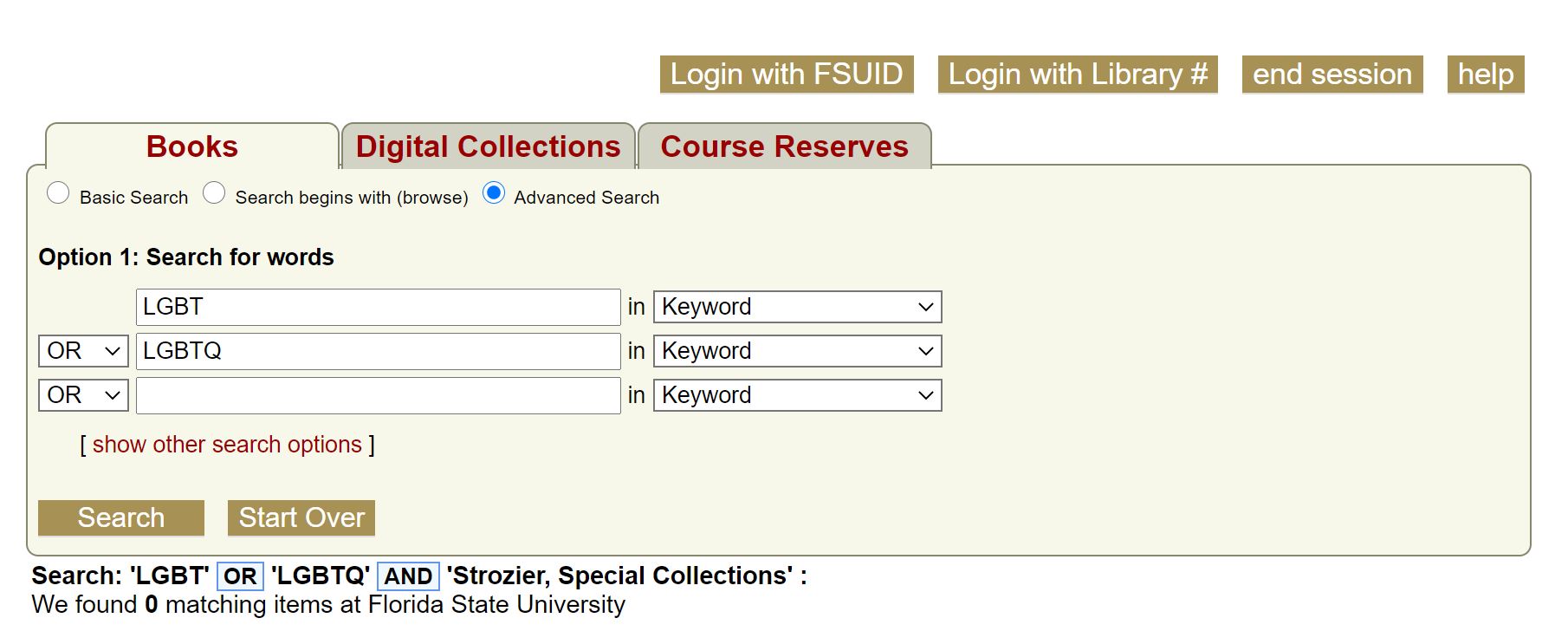Hello! My name is Gino Romero.

As a student, it was comforting to know that it wasn’t just me, that the institution was also struggling to find these histories. But as a researcher, I was frustrated beyond reason. I wondered why it’s so hard to find these histories. Now I work in Special Collections and Archives, and I wonder what my fellow coworkers and I can do to fix this? I began asking these questions to my colleagues and decided to make it into a project.

We often think that libraries are neutral, that they are solely a source of information for  people to come and formulate their own opinions on the matter. Librarians are human; personal biases always creep into the work, often to the detriment of marginalized populations. Libraries are sites of power, organizing, labeling, and delivering information in ways that affect cultural beliefs and understanding on institutional, national, and even global scales. It is important that we take the time to acknowledge that power and privilege, and that the discipline evolves out of (perhaps comfortable) old practices that contribute to systems of bigotry, oppression, and white supremacy.
people to come and formulate their own opinions on the matter. Librarians are human; personal biases always creep into the work, often to the detriment of marginalized populations. Libraries are sites of power, organizing, labeling, and delivering information in ways that affect cultural beliefs and understanding on institutional, national, and even global scales. It is important that we take the time to acknowledge that power and privilege, and that the discipline evolves out of (perhaps comfortable) old practices that contribute to systems of bigotry, oppression, and white supremacy.
Librarians are tasked with the role of making information discoverable and available. They have the ability to place subject headings and search terms on materials, are involved in the acquisition of materials, and even contribute to what is taught in the classroom. These factors, among many others, put libraries in a unique position of power, as gatekeepers of information.
The project – asking my colleagues to engage with queer histories in archives
For Pride month, I tasked my fellow coworkers with taking a moment to reflect on our role in the distribution and accessibility of information relating to LGBTQ+ history. I asked them to look into our catalogs in order to find materials, to experience what it’s like to be a queer researcher in our institution. The rules for the search were to prioritize the following:
- LGBTQ+ people of color
- Materials outside of the Pride Student Union collection (These institutional records don’t represent intentional acquisition, and while valuable records of queer life on campus, don’t tell the story of underrepresentation on a larger scale.)
- Stories that do not relate to LGBTQ+ struggles/hardships (Look for stories that highlight queer joy/culture!)
I asked my colleagues to submit a write up of their findings, describing why they chose that object, and what their experience was like in the shoes of a queer researcher. I will curate these submissions and blog about them on a biweekly basis, in hopes that this conversation will continue past Pride month and help create sustainable change.
I’m happy that this Pride Month work is turning into a blog series! In addition to sharing my colleagues’ findings, I hope to interview librarians and scholars who study representation in the archives. Be sure to check out the next post (hoping for a biweekly schedule), where I plan to include some of the discovered materials and describe the challenges my colleagues reported in their search process.
In addition to this prompt, I also sent my colleagues some LGBTQ+ resources that I would like to share here as well:
- https://www.glitsinc.org/
- https://time.com/4327915/gender-neutral-pronouns/
- https://www.glaad.org/transgender/allies
- https://www.glaad.org/resources/ally/2
- https://www.glaad.org/
- https://marshap.org/about-mpji/
- https://www.hrc.org/resources/glossary-of-term
Other institutions have been researching and working towards a solution for this issue as well. UNC has created a conscious editing initiative to repair and fix any harmful/outdated language in their catalog.
Whether we follow the lead of other institutions or create a new program entirely just for FSU, it is important to take the time to acknowledge the power information holds and to make sure that we are doing our part to make it accurate, available, and equitable.

